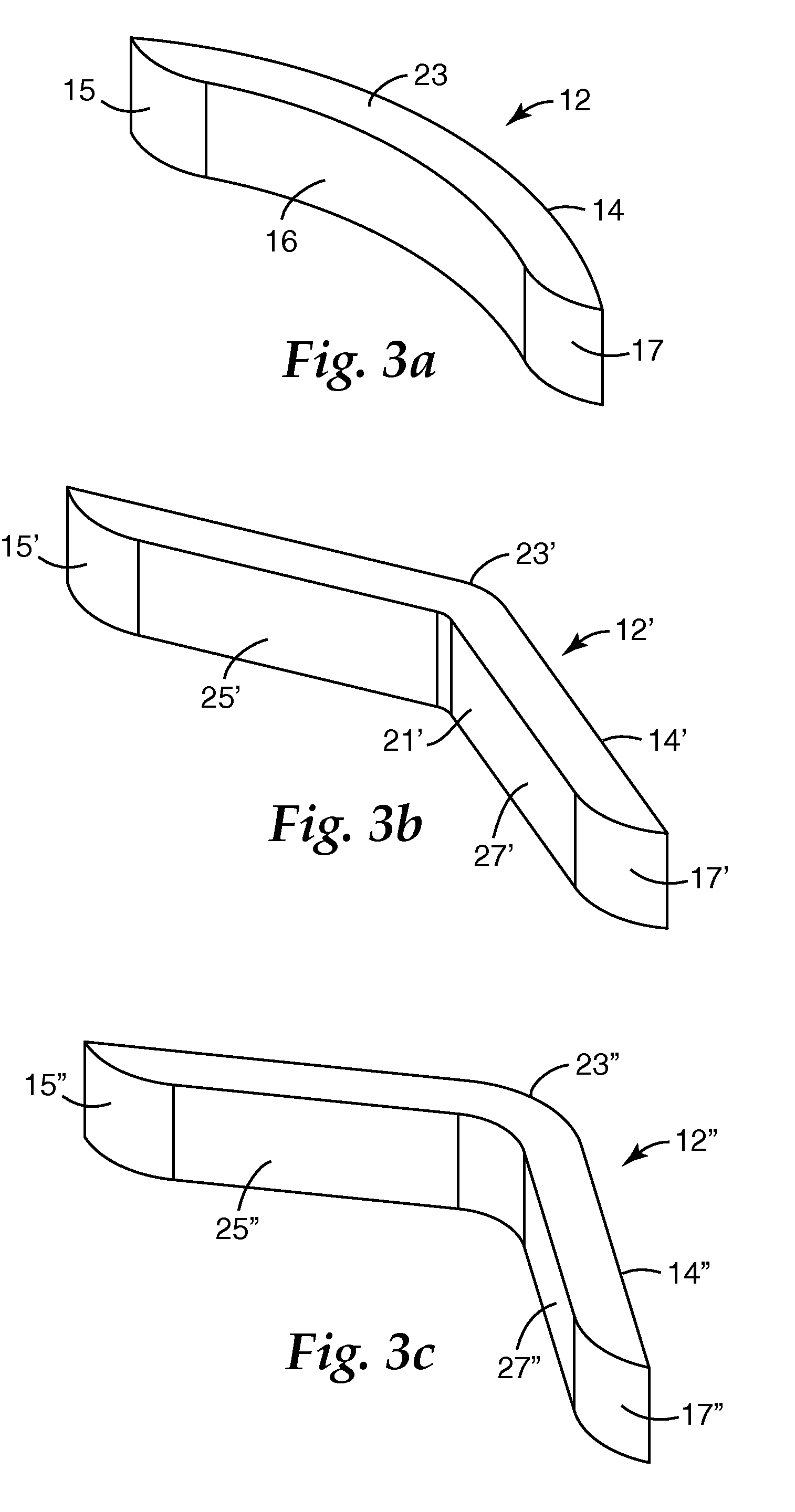Respirator That Uses A Predefined Curved Nose Foam
a nose foam and nose foam technology, applied in the field of nose foam respirators, can solve the problems of wearer breathing track, difficult to achieve a snug fit, and difficulty in obtaining a snug fit, so as to improve the fit and/or comfort over the nose
- Summary
- Abstract
- Description
- Claims
- Application Information
AI Technical Summary
Benefits of technology
Problems solved by technology
Method used
Image
Examples
example
[0064]A nose foam of the invention was constructed and attached to a mask body. The nose foam included a reticulated flexible polyester polyurethane foam manufactured by Foamex International Inc., Linwood, Pa. under the brand SIF™. The foam had a nominal density of 26 kilograms per cubic meter (kg / m3), tensile strength of 173 Kilo Pascals (kPa), tear strength of 525 Newtons per meter (N / m) as determined in accordance with ASTM D 3574. The pore texture of the foam was nominally 195 cells per 10 lineal centimeters. The nose foam was formed from a 7.9 mm thick foam sheet that had a pressure sensitive adhesive applied to one face. The adhesive was acrylic based, was manufactured by the 3M Company, and was manually applied to one face of the cut nose foam. The foam sheet was then placed onto a cutting surface and was cut using a steel rule die cutting tool. The cut nose foam was then removed from the cutting tool, resulting in an arced, annulus-section, part that mirrored the contour of ...
PUM
| Property | Measurement | Unit |
|---|---|---|
| thickness | aaaaa | aaaaa |
| thickness | aaaaa | aaaaa |
| thickness | aaaaa | aaaaa |
Abstract
Description
Claims
Application Information
 Login to View More
Login to View More - R&D
- Intellectual Property
- Life Sciences
- Materials
- Tech Scout
- Unparalleled Data Quality
- Higher Quality Content
- 60% Fewer Hallucinations
Browse by: Latest US Patents, China's latest patents, Technical Efficacy Thesaurus, Application Domain, Technology Topic, Popular Technical Reports.
© 2025 PatSnap. All rights reserved.Legal|Privacy policy|Modern Slavery Act Transparency Statement|Sitemap|About US| Contact US: help@patsnap.com



